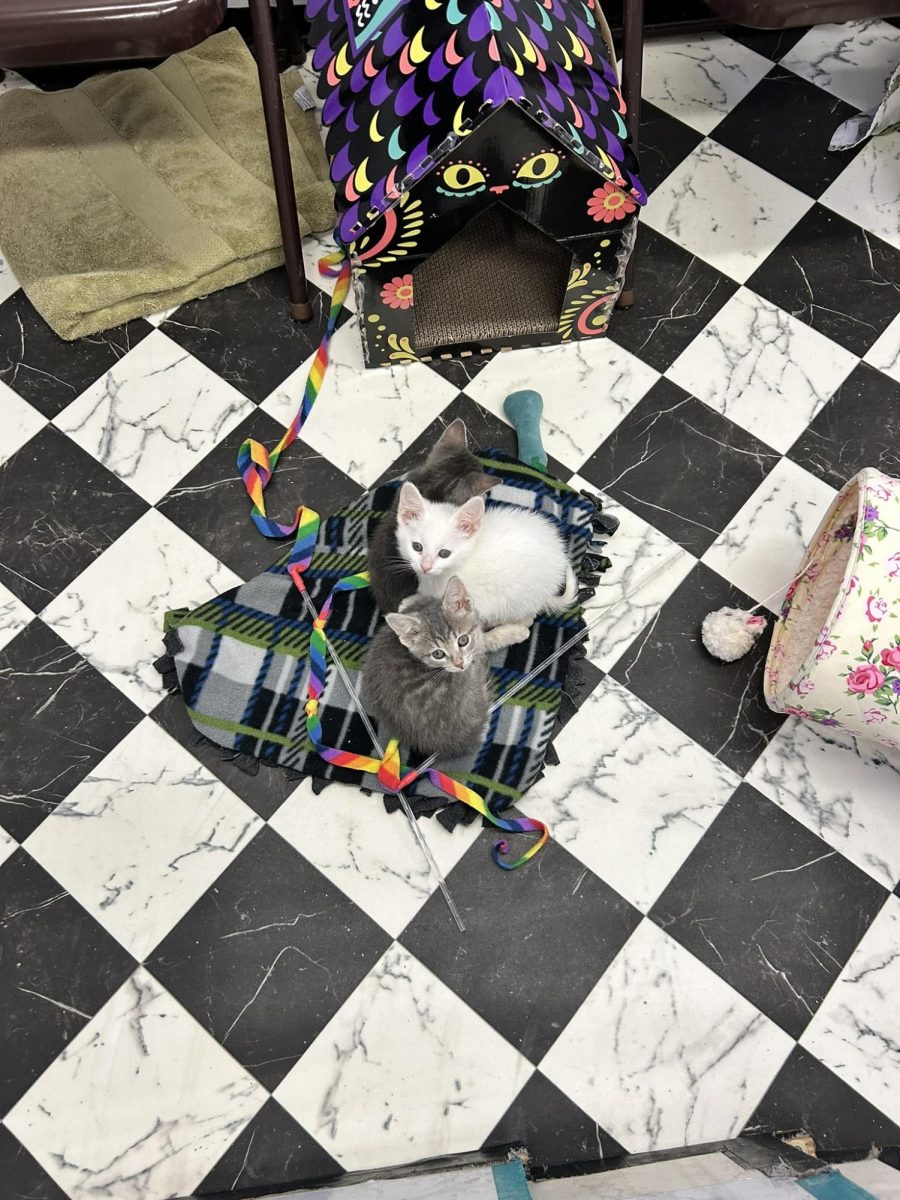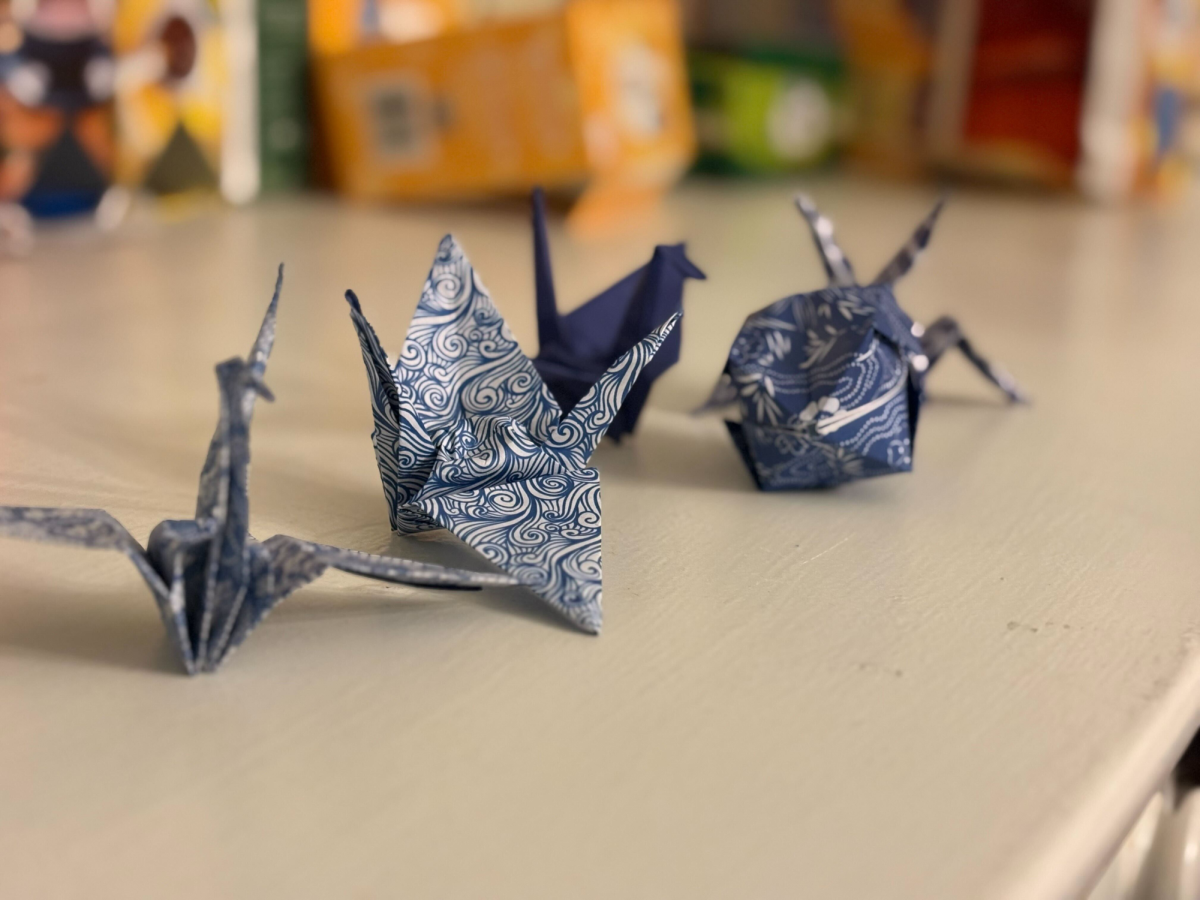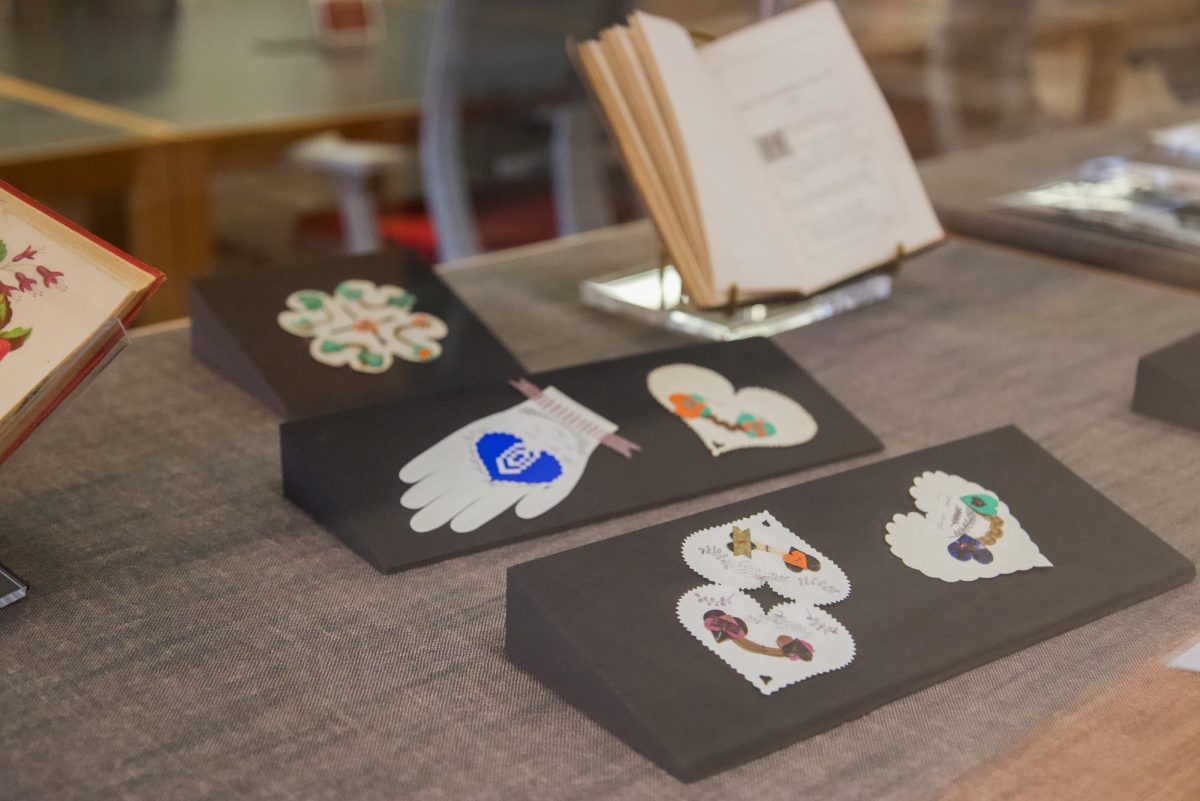Behind the seemingly endless litters of kittens that make their way through the Ginko Gallery’s back room is Liz Burgess, OC ’73, a foster parent for neonatal kittens in Oberlin. Her experience with cats spans approximately 20 years, and her initial interest was sparked when a cat was killed in front of her house.
“We discovered that she had kittens,” Burgess said. “I wanted to take them, so I learned how to raise them just by working with [my vet].”
Today, she raises approximately 75–100 kittens a year, a handful of them only a couple days old and half of them unweaned. During the day, these kittens live in the Ginko Gallery & Studio, where students and community members can visit and spend time with them, helping to socialize them.
“That’s the only difference between a feral cat and a domestic cat, whether they’ve had a good experience with humans in that first eight weeks of their life,” Burgess said. “Otherwise, they’re basically a wild animal.”
To make this cat meet-and-greet opportunity a possibility, the Community Action to Save Strays, an organization that helps to care for and control the local feral cat population, reimburses Burgess for food and formula that she needs for the kittens she fosters. As a volunteer, like everyone else involved with CATSS, Burgess’s role provides support for the Oberlin community by taking these cats off the streets and caring for them.
“I feel like I’m not just contributing to the overpopulation of an invasive species, because cats are an invasive species that are contributing to the population, I’m part of a group that’s actually working on the whole problem,” Burgess said. “[And] while I’m taking care of the kittens downstream, [CATSS] is working upstream to help the feral cat population grow healthier and reduce the number of unwanted kittens out there.”
Burgess, however, cannot care for these kittens on just the reimbursements from CATSS. College second-year Ella Bruzek’s name appears the most on the volunteer board at the Ginko Gallery’s backroom.
Bruzek interacts with the other people that volunteer with the Ginko cats, and she reminisced on how she came to be the figurehead of the student volunteers at Ginko’s in such short time. While she would go in the mornings and afternoons to clean, feed, and give the kittens medications, Bruzek wanted to be more involved, so she applied to be on the board of CATSS. One of the things that drew her to Oberlin — even as a self-touted dog person — was the Ginko Gallery.
“I actually discovered the Ginko Gallery on my tour,” Bruzek said. “My tour guide just mentioned it, and I was like ‘I have to check that out.’ So I went, and I had such a great conversation with Liz. It was one of the few things that actually made me choose Oberlin.”
Though she began with the Ginko Gallery, she found her way to the CATSS organization because of how intertwined the two are. Burgess raises kittens to be transferred to CATSS’s Lincoln Street location. Without CATSS, Bruzek noted, the feral cat population would be uncontrollable.
The multiple ways to get involved with CATSS is exemplified in its board members, such as Bruzek and the current chair of the board Lucas Draper, OC ’23. Hailing from Australia, he was aware there wasn’t any way to adopt a cat during his time as a student because he didn’t know what he would do with one over the summer.
“In my [second] year at Oberlin, we were in single dorms, and there was not a lot of human interaction happening, and I wanted to foster cats, and I managed to get an [emotional support animal] approval through the College,” Draper recalled. “So I started fostering kittens and cats through the organization CATSS. And I think over my course of fostering for two years, I fostered about eight different cats, one at a time. [By] being able to foster, I was able to keep the cat for a short period of time and give it a home.”
The challenge of getting an emotional support animal can be a long haul, but it guided Draper to greater involvement with the CATSS organization. Today, he organizes the 20–30 volunteers for CATSS that each complete different tasks from fostering to transportation. He still enjoys the small size of the organization, which is part of what makes it so personable.
“We have a lovely woman who is actually allergic to cats, but she still wants to be involved with us, and so she was like ‘I can transport [cats] to the vet,’” Draper said.
Although Draper majored in Computer Science and Theater and has no interest in practicing medicine, he will be starting a vet nursing distance education program next semester.
He expects to continue working with the CATSS organization as long as he’s in Oberlin. He currently works for the Computer Science department with a contract that ends next year.
While he’s here, Draper plans to continue another duty of his when necessary: trapping. This is the first, and oftentimes longest, step in the Trap-Neuter-Release action plan intended to care for strays, decrease their litters, and reduce transmission of diseases such as FIV and feline leukemia. When he would go out to trap in the past, Draper would bring along the chair of Jewish Studies at the College, Associate Professor of Jewish Studies and Religion Shari Rabin.
“Shari and I became friends when we started trapping together,” Draper said. “When we first started, she was a little more scared of the feral cats so she’d [say] ‘I’ll drive, you trap.’”
Trapping can be a stressor for cats, though it isn’t necessarily traumatic. Clipping the ear of a TNRed cat avoids further trauma for the cat. It is a sign to other trappers that this cat has been trapped and neutered or spayed already and that the cat should be left alone to live out a non-domesticated life.
“Lucas and I learned at the same time [how to trap],” Rabin said. “Another volunteer took us along on a trapping expedition, and then we went out a couple more times together and figured out how to do it. Lucas is much better around scared and unsocialized cats [than I am].”
Though trapping is not something that Rabin initially thought she would find herself doing, she realized the importance of it.
“This is like [a] kind of invisible infrastructure that you’re not aware of until suddenly, you know, you’re aware of it,” Rabin said.
Bruzek would like to get as much experience as she can with trapping.
“[In the future], I’d like to do more trapping,” Bruzek said. “I’m just starting out, so I’m hoping I can keep that ball rolling. I think I’ll just take every new opportunity as it comes.”
Rabin notes that CATSS has helped 135 cats in total this year; 100 were adopted and 35 were transferred to other shelters to be adopted. She refers to herself as “kitty air traffic control.”
Like Draper, Rabin began her involement by fostering cats, though in the fall of 2019. In summer of 2020 she became a volunteer with CATSS, writing thank-you notes, following up with people who adopted kittens too young to be fixed, and updating the mailing list when there were new donations. In January 2021, she joined the board.
“It’s been a really good way to connect to the broader community,” Rabin said. “My relationship to Oberlin as a town, a place, and a community, is really different because anybody in town can have cats come into their life that need help, so it’s really cool to be able to interact with and help out a really broad array of Oberlin residents. It’s a testament to the power of the community to come together and make things happen.”
While the organization focuses on decreasing the overpopulation of stray, feral cats in Oberlin and the surrounding area, they are also thinking about how to better improve their service everyday.
“I’d love to see the City investing in the work that we’re doing at some point, which is really a community service that benefits everybody,” Rabin said.












